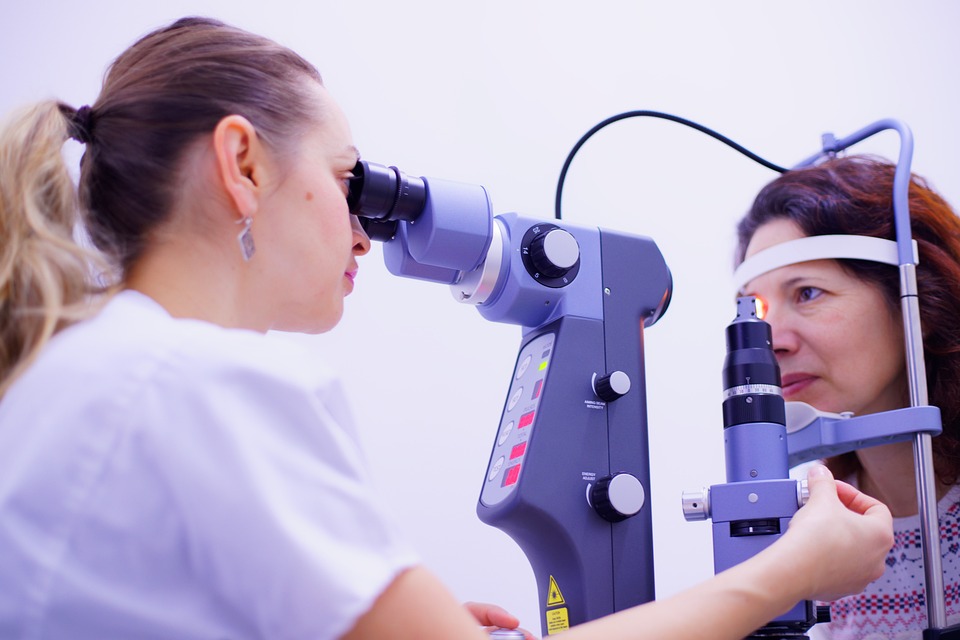While many people are grateful for good eyesight, many, on the other hand, also take it for granted. Various eye diseases can impact your vision. One such condition is cataracts, which primarily affect many older people. For instance, at least 3% of people over 65 in the UK have cataracts. The figure for adults aged 85 and over is almost 100%. In people with diabetes, symptoms often appear at an earlier age.
How Does Cataract Occur?
The eye is composed of many parts. The most striking part of the eye is the coloured part, known as the iris. In the centre of the iris lies the pupil, a black spot. Right behind the pupil and iris is the lens. It usually is transparent and allows clear vision.
A cataract occurs when the eyelid, which is usually clear, becomes cloudy. This can happen for different reasons (age, trauma, inflammation, etc.). A clear lens is vital for the normal functioning of the eye: it guides the incident light to the proper place in the retina (sensory membrane containing millions of light-sensitive cells). The dilated lens can cause severe vision problems in everyday life.
Causes of Cataract
Ageing is the most common cause. The prevalence of cataracts is 10% in people under 65, 30% in people aged 65-75, 50% in people aged 75-85 and 70% in people over 85.
Other factors that may also cause cataracts include:
- Exposure to certain substances (corticosteroids in high doses or long-term treatment).
- Radiotherapy.
- Ultraviolet radiation
- Smoking
- Accident: an accident or trauma can damage the lens of the eye.
- Chronic diseases: Uncontrolled diabetes or common eczema can also cause cataracts.
- Certain forms of cataracts can develop from birth and/or due to an illness the mother had during pregnancy.

Symptoms
Cataracts are generally characterized by a reduction in visual acuity, i.e. a reduced vision accuracy, even when wearing glasses. Thus, the disease can directly affect your daily activities. In advanced cataracts, the pupil of the eye will appear grey or white.
Cataracts Are Associated With Typical Visual Symptoms Like:
-Blurred vision, usually from a distance.
-Double vision.
-Blurred perception of colours and contrasts.
-Light sensitivity (photophobia), e.g. to car headlights.
Treatment
Cataracts are treated with surgery. Once the crystalline lens is removed, it is replaced with a clear artificial lens. The treatment is painless, safe and quick.
Treatment for cataracts usually takes about 30 minutes and is carried out under local anesthetic. Following this procedure, the eye has to be treated with eye drops and ointments for a few weeks. This is essential to ensure proper healing of the cataract and to avoid infection.

Lenses
Different types of implantable lenses are available:
Single-Focal Implants
This lens corrects one distance of vision. There are two types of single focal implant lenses:
Spherical Single Focal Lens Implant is used in patients with slight or no astigmatism (a treatable abnormality in the eye’s curvature that causes blurred vision).
– For patients with astigmatism, a toric (single focal length) implanted lens that corrects or reduces the astigmatism of the eye may be preferred so that he/she can see better without the need for additional spectacle correction.
Implantation of Multifocal Lenses
If you intend to get multifocal lenses implanted, certain conditions, including age, must be met. For instance, you can get multifocal lenses implanted if you are over 40 years old. These lenses correct three viewing distances: near, far, and intermediate. Multifocal implantable lenses are also available in toric versions to correct astigmatism.
If you encounter any of the symptoms or issues mentioned above and you’re unsure what’s causing it, you can visit the specialized eye care centre, SUMMERHILL OPTOMETRY in Toronto. Equipped with cutting-edge and latest technologies, they provide a broad range of eye care services, including cataract examination and treatment, conjunctivitis, glaucoma and more. Contact them for more information.


